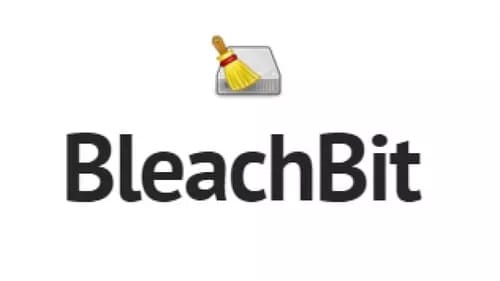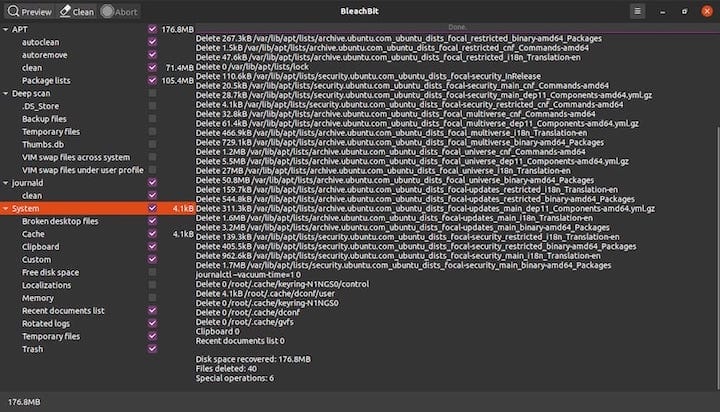How To Install BleachBit on Manjaro

BleachBit is a powerful open-source system cleaning utility that helps Manjaro users maintain their system’s performance and protect their privacy. This comprehensive guide will walk you through the process of installing BleachBit on Manjaro, exploring its features, and providing best practices for optimal usage.
Understanding BleachBit
BleachBit is a versatile system cleaning tool designed to help users free up disk space and maintain privacy. It offers a wide range of features, including:
- Deleting unnecessary files to reclaim disk space
- Clearing browser caches and history
- Shredding files to prevent recovery
- Wiping free disk space
- Cleaning application logs and temporary files
As an open-source application, BleachBit is constantly evolving and improving, making it a reliable choice for Manjaro users seeking an efficient system cleaner.
Pre-Installation Requirements
Before installing BleachBit on your Manjaro system, ensure that you meet the following requirements:
- A stable internet connection for downloading the package
- Sufficient disk space (approximately 4 MB)
- Administrative privileges on your Manjaro system
- Up-to-date system packages
It’s also recommended to back up important data before proceeding with any system cleaning operations.
Installation Methods
There are two primary methods to install BleachBit on Manjaro: using the package manager and manual installation. We’ll explore both options to give you flexibility in choosing the most suitable method for your needs.
Using Package Manager
Installing BleachBit using Manjaro’s package manager is the simplest and most straightforward method. Follow these steps:
- Open the terminal by pressing Ctrl + Alt + T or searching for “Terminal” in the application menu.
- Update the package database by running:
sudo pacman -Sy
- Install BleachBit by executing the following command:
sudo pacman -S bleachbit
- When prompted, enter your password and confirm the installation by pressing ‘Y’.
- Wait for the installation to complete. The package manager will automatically handle any dependencies.
This method ensures that you install the version of BleachBit that’s compatible with your Manjaro system and is maintained through the official repositories.
Manual Installation
If you prefer to install the latest version of BleachBit or want more control over the installation process, you can opt for manual installation:
- Visit the official BleachBit website.
- Navigate to the “Download” section and select the appropriate package for Manjaro. Look for the
.tar.gzor.tar.bz2file. - Once downloaded, open the terminal and navigate to the directory containing the downloaded file:
cd ~/Downloads
- Extract the archive using the appropriate command:
tar -xvf bleachbit-*.tar.gz
- Change to the extracted directory:
cd bleachbit-*
-
- Install BleachBit using the following command:
sudo make install
- Enter your password when prompted and wait for the installation to complete.
Manual installation allows you to install the latest version of BleachBit, which may include new features or bug fixes not yet available in the package manager version.
Post-Installation Setup
After successfully installing BleachBit, it’s important to configure it properly for optimal performance:
- Launch BleachBit by searching for it in the application menu or running `
bleachbit` in the terminal. - On first launch, you may be prompted to run BleachBit with root privileges. This allows BleachBit to clean system-wide files and directories.
- Review the available cleaning options and select the ones you want to use. Be cautious when selecting system-related options, as they may affect your system’s functionality.
- Configure BleachBit’s preferences by clicking on “Edit” > “Preferences” in the menu bar. Here, you can set options such as:
– Language
– Check for updates
– Overwrite files to hide contents
– Custom cleaners - Consider setting up a schedule for regular cleaning sessions to maintain system performance.

Using BleachBit on Manjaro
Now that BleachBit is installed and configured, let’s explore how to use its features effectively on your Manjaro system.
Basic Operations
- Selecting cleaning options: In the main BleachBit window, you’ll see a list of applications and system areas that can be cleaned. Check the boxes next to the items you want to clean.
- Preview cleaning: Before running a cleaning operation, click the “Preview” button to see what files will be deleted and how much space will be freed.
- Running a cleanup: Once you’re satisfied with your selection, click the “Clean” button to start the cleaning process. BleachBit will remove unnecessary files and free up disk space.
- Viewing results: After the cleaning process is complete, BleachBit will display a summary of the actions performed and the amount of space freed.
Advanced Features
BleachBit offers several advanced features for power users:
- File shredding: To securely delete sensitive files, use the “Shred files” option under the “File” menu. This overwrites the file multiple times before deletion, making recovery virtually impossible.
- Free space wiping: To ensure deleted files can’t be recovered, use the “Wipe free space” option. This fills your free disk space with random data, overwriting any traces of deleted files.
- Browser cleaning: BleachBit can clean various web browsers, including Firefox, Chrome, and Opera. It can remove cookies, cache, history, and other browser-related data.
- Custom cleaners: Create your own cleaning rules by adding custom cleaners. This is useful for applications not natively supported by BleachBit.
Best Practices and Safety
While BleachBit is a powerful tool, it’s important to use it responsibly to avoid unintended consequences:
- Regular backups: Always maintain up-to-date backups of your important data before running system-wide cleanups.
- Selective cleaning: Be cautious when selecting system-related cleaning options. Avoid cleaning critical system files unless you’re sure of the consequences.
- Frequency of cleaning: For most users, running BleachBit once a week or every two weeks is sufficient. More frequent cleaning may be necessary for power users or those with limited disk space.
- Safe to clean: Generally, it’s safe to clean browser caches, temporary files, and trash bins. These can be cleaned regularly without risk.
- Avoid cleaning: Be cautious when cleaning log files, as they can be useful for troubleshooting. Also, avoid cleaning configuration files unless you’re sure you won’t need them.
Troubleshooting Common Issues
While BleachBit is generally reliable, you may encounter some issues. Here are solutions to common problems:
- Permission errors: If you encounter permission errors, try running BleachBit with root privileges using `
sudo bleachbit` in the terminal. - Cleaning failures: If certain cleaning operations fail, ensure that the target applications are closed before running BleachBit.
- Update issues: If you’re unable to update BleachBit, check your internet connection and try updating your system packages first with `
sudo pacman -Syu`. - Slow performance: If BleachBit runs slowly, try cleaning fewer items at once or exclude large directories from the cleaning process.
- Accidental deletion: If you accidentally delete important files, stop using the system immediately and use a file recovery tool. However, prevention is better than cure, so always double-check your selections before cleaning.
Keeping BleachBit Updated
To ensure you have the latest features and security updates, it’s important to keep BleachBit up to date:
- If you installed BleachBit using the package manager, it will be updated along with your system packages. Run the following command regularly:
sudo pacman -Syu
- For manual installations, check the BleachBit website periodically for new releases and follow the manual installation process to update.
- Enable the “Check for updates” option in BleachBit’s preferences to receive notifications about new versions.
Congratulations! You have successfully installed BleachBit. Thanks for using this tutorial for installing the BleachBit open-source system cleaner and privacy tool on Manjaro system. For additional or useful information, we recommend you check the official BleachBit website.